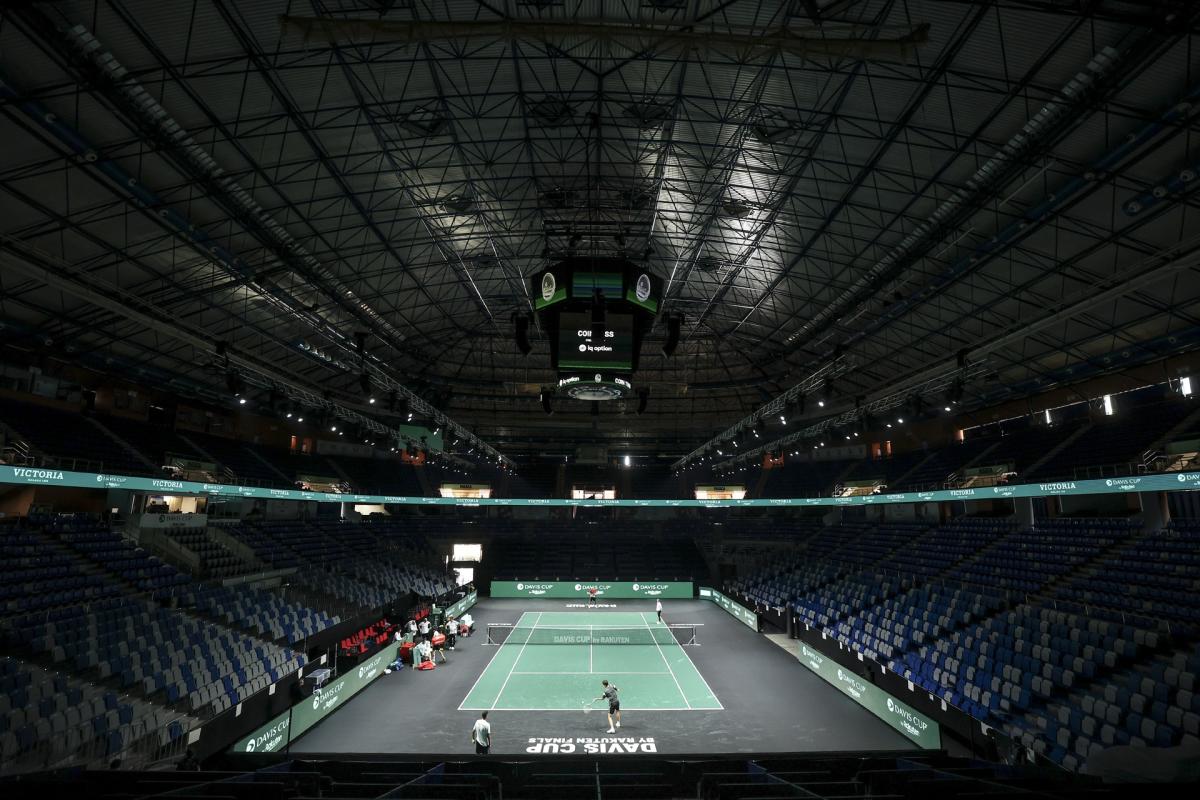Málaga, 20 Nov (EFE).- The José María Martín Carpena Sports Hall in Málaga will be the venue where the winning team of the 2022 Davis Cup will be decided next week, a competition which during its 122 years of life has it has experimented with different formats and is now launching a hyper-compact calendar, with quarters, semi-finals and final concentrated in one venue over six days.
As for 2021, the teams in the final tournament have been reduced from 18 to 16, the round of 16 was separated in time from the group stage, which was already being played in September at four venues, and all matches in the quarter-finals they will play in the only venue in Malaga.
It will be the third consecutive change – with the deadline of the 2020 edition, not celebrated due to the pandemic -, given that 2019 has seen the great renewal of the last decades: the dispute of a final phase at the end of the season, with 18 teams in the same headquarters, which was Madrid.
Until then the old format of a final between two teams in the country of one of them had been maintained, one that matched in rounds, as the culmination of a few qualifiers played throughout the year around the planet.
The quarter-finals that will open the 2022 finals from Tuesday will be Australia-Netherlands, Croatia-Spain, Italy-United States and Germany-Canada, with direct elimination.
Since its creation in 1900, these are the major changes Davis Cup has undergone in its competition system:
1900: The first edition of a tournament between the United States and Great Britain is held in Boston (USA), with the delivery of a cup donated by Dwight Davis, a player who participated in the development of the project.
1905: The competition opens to Belgium, Austria, France and Australia (Australia and New Zealand). It is played in a ‘challenge’ format: all teams compete for the right to challenge the winner of the last edition.
1923: The teams are divided into the American Zone and the European Zone. The finalists play against each other and the winner faces the defending champion.
1955: Eastern Zone added.
1966: The European Zone is split in two.
1969: Participation reaches 50 countries for the first time.
1972: The tournament takes the form of a playoff, in which the last winner is included.
1981: A seeding system is established and the first 16 form the World Group.
1989: The ‘tiebreak’ is allowed in matches, except in the fifth set.
2016: The ‘tiebreak’ is applied in any manga.
2019: The 18 World Group teams are divided into six groups of three, to play simultaneously in a single venue, Madrid, where the quarter-finals, semi-finals and final are also played. Matches range from 5 to 3 points (two individual and one doubles) and each match, from five sets to three.
2021: the six groups of the finals are spread over three cities, each with two groups and one or two quarter-finals; In one of them, Madrid, the semi-finals and the final are also played.

2022: The 16 finalist teams are divided into four groups playing the round robin stage in four different cities. The two winners of each group progress to the quarter-finals, which will be played two months later at a single venue, Malaga, which will also host the semi-finals and the final.
(c) EFE Agency


